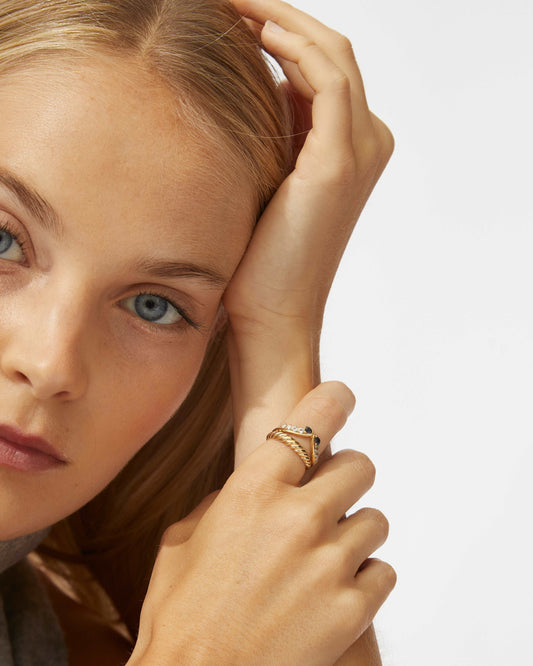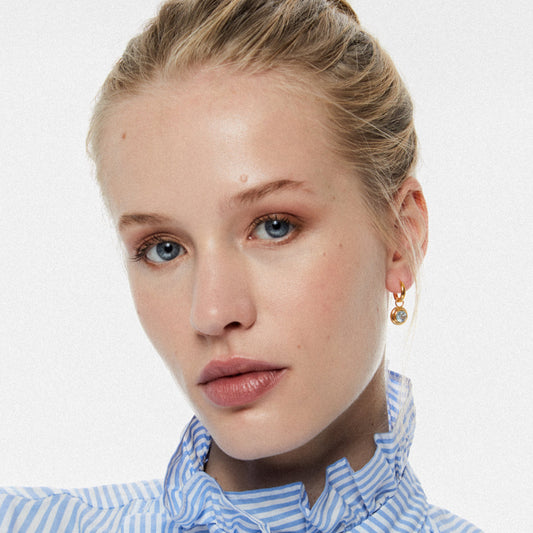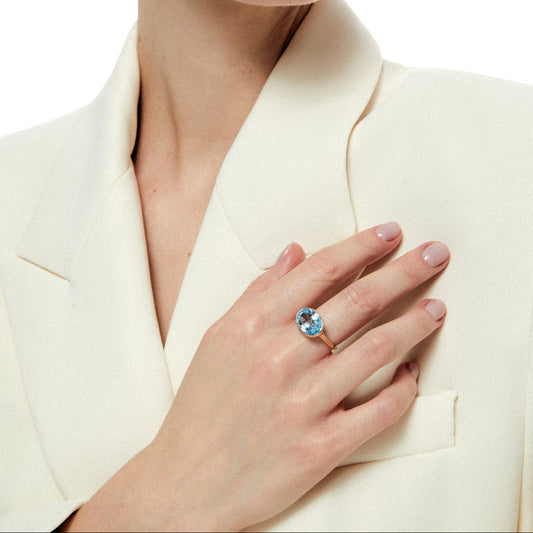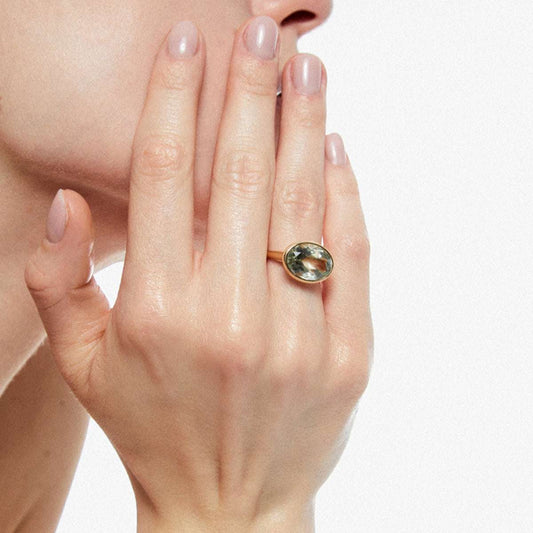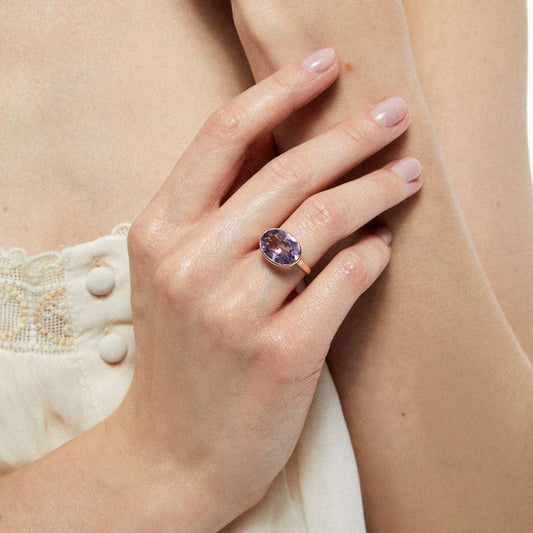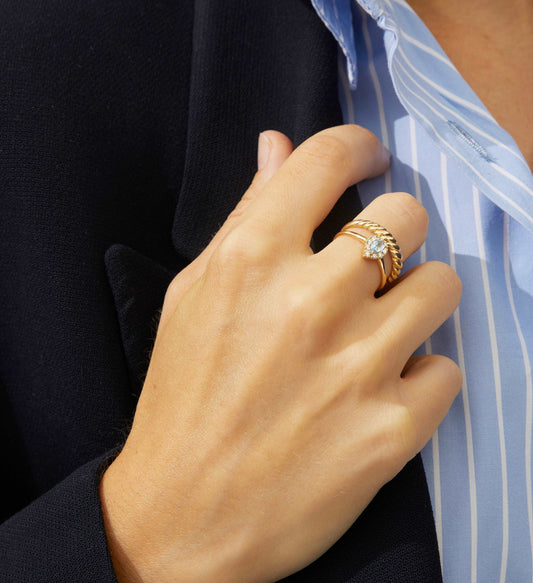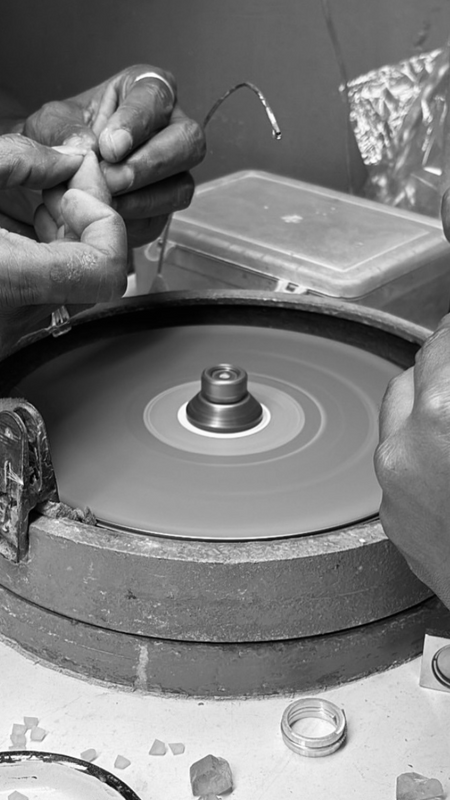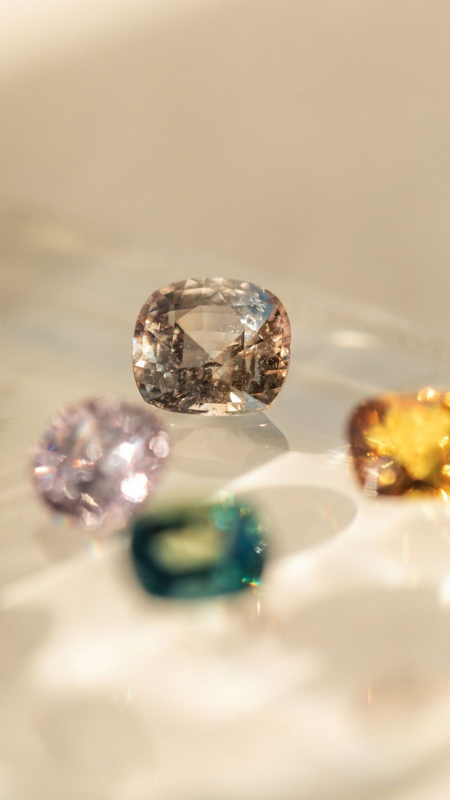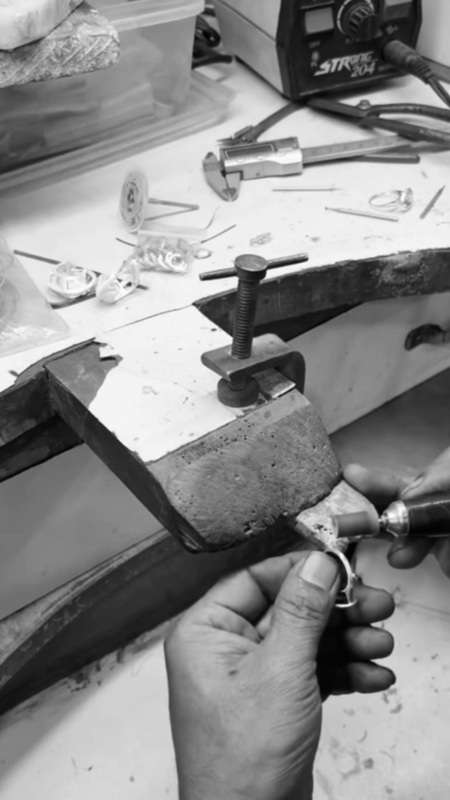Materials
Irene: " I founded B&B with the belief that making fine jewelry does not have to be detrimental to our values. In partnership with our trusted suppliers, the quality, durability and longevity of our pieces are fundamental when selecting carefully our most noble materials". That is why our materials only include gold and silver, in different versions.
METALS
18KT GOLD:
Gold is a material that, when used in jewelry, usually comes in different qualities or degrees of purity. This purity is measured in carats , and can range between 8k and 24K, depending on the amount of gold that has been used to make the jewel in question.
The 18-karat gold that we use in our jewelry is also known as “first-grade gold” or “750.” This last denomination also refers to the amount of pure gold used in its production, being at least 750/1000 thousandths of gold.
Although 24Kt gold represents purity at its finest, there are several reasons why we should take 18K gold more into account when purchasing a piece of jewelry that is made of solid gold.
Pure gold, due to its composition, is a very malleable and deformable material, so it is advisable to add alloys of other metals of higher hardness so that this characteristic does not pose a problem in the future. However, 18-karat gold has 75% pure gold in its composition, with the remaining 25% being other metals, which modify its hardness and resistance.
Therefore, in the design of our jewelry in which we use gold as the main metal, the gold we use is 18k since it obtains a balance between the value of gold and the hardness due to the alloys. This way our jewelry does not lose its shape or beauty.

14KT GOLD:
14-karat gold is one of the most balanced alloys for fine jewelry: it combines the value of pure gold with the strength needed for daily wear, while maintaining beauty and durability
A 14kt ring contains approximately 58.3 % pure gold, mixed with other metals such as copper, silver, or others depending on the color (yellow, white, or rose gold).
Compared to higher-purity gold (like 18 kt or 24 kt), 14 kt gold resists scratches, dents, and deformation better, making it ideal for pieces worn every day, like engagement rings.
Depending on the alloy metals, you can achieve classic tones such as yellow, white, or rose gold. Each variant requires specific care — for example, white gold may be rhodium-plated to maintain its bright tone.
While it does not tarnish like less noble metals, micro-scratches may appear over time, and it may lose some shine if not cleaned or polished periodically. With proper care, however, it will retain its beauty for many years.
9KT GOLD:
Solid gold is a precious metal that does not rust or fade. Our 9 carat gold jewelry has 37.5% pure gold in its composition and, although it is less “pure” than 18kt gold, the extra mix of other metals makes it a much more resistant option than any other, ideal to wear every day at a much more affordable price.
STERLING SILVER:
We use 925 sterling silver. This means that 92.5% of the piece is pure silver. This is a very durable and economical material ideal for long-term daily use.
Does silver oxidize?
Silver is a noble metal, so it cannot oxidize, but it can darken. This process, called sulfidation, occurs when hydrogen sulfide in the air comes into contact with silver jewelry, changing its color.
Sterling silver jewelry that comes into contact with water or other chemicals may also change its color. Likewise, its alloy with other metals or daily use influences it, which can cause sterling silver jewelry to alter its shine or tone over time. However, although you may think that silver becomes ugly, all of these conditions can be avoided with good care and cleaning of the jewelry.
PLATINUM:
Platinum is one of the noblest and most durable metals, making it ideal for pieces that are worn daily, such as engagement rings. Its main attributes include:
Usually alloyed to 950 ‰, meaning at least 95 % of the metal is pure platinum. This high purity makes it highly resistant to corrosion and nearly impervious to everyday wear.
Its silvery-white tone does not require additional plating and retains its shine and appearance over time.
Being very pure, platinum is hypoallergenic, making it an excellent choice for sensitive skin.
Denser than gold and other common metals, platinum gives a substantial feel when worn. It deforms less with use, and when scratches appear, they only slightly patina and can be polished to restore the original shine.



